Sometimes you just want a nice looking plant that doesn’t take up too much space. Well, the Monstera Minima could be the one for you! It resembles the larger Monstera Deliciosa, but is a much smaller version of one.
These tropical plants resemble a larger Monstera with its glossy green leaves with deeply cut out margins, making it look similar to a Swiss Cheese Plant. The smaller size is what is so attractive to so many plant parents since they don’t require much space and can be kept in smaller areas. The magnificent Monstera deliciosa has much larger leaves than the Monstera Minima.
These have the same aerial roots that they use to climb up other plants when in the wild. Feel free to trim those back if you want if you’re growing it indoors.
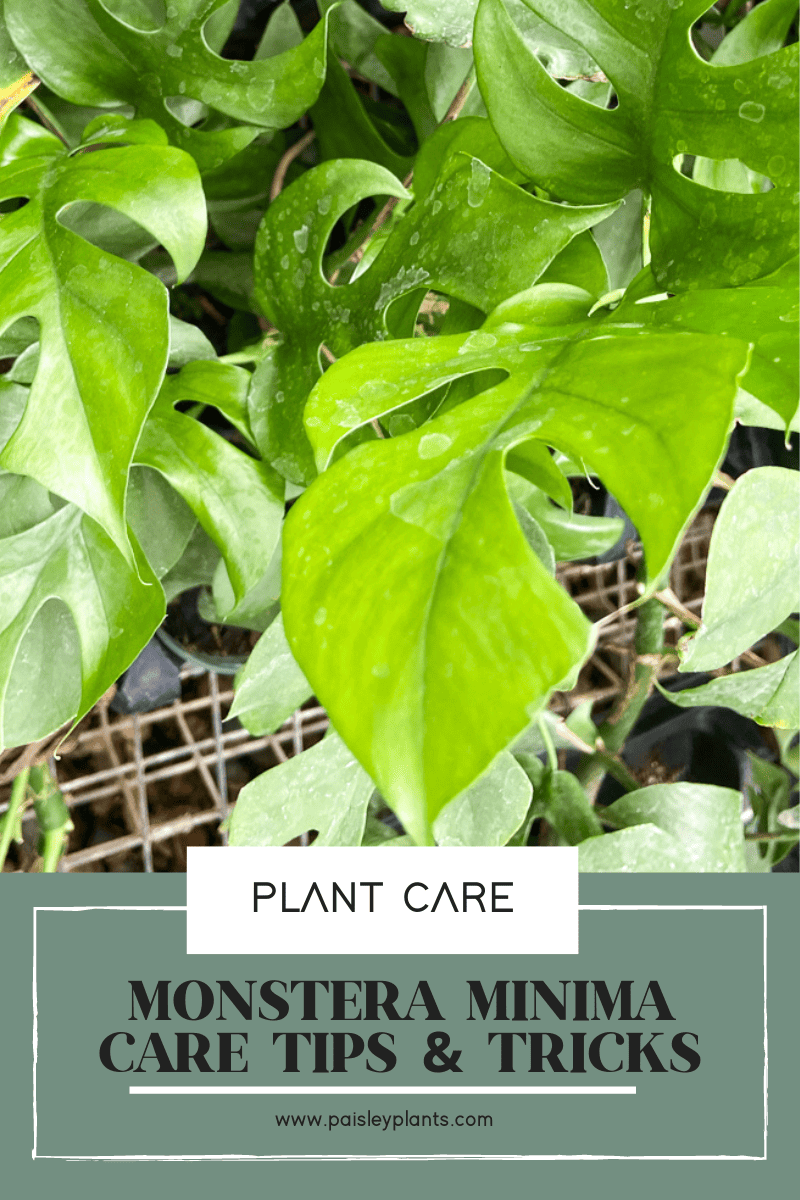
Table of Contents
Background and History
This plant is native to Southern Thailand and Malaysia. While the common name is Monstera Minima, the botanical name is Rhaphidophora tetrasperma. It is actually a member of the species of the Araceae family of plants that flower, genus Rhapidorphora. This genus actually has approximately 100 different species!
Common Names
In fact, it isn’t even a true Monstera, but is also known as a Philodendron piccolo, Ginny philodendron, and a mini Monstera. It was named for its resemblance to the Monstera deliciosa, but is actually a distant relative of the Monstera genus.
Toxicity
Touching mini Monstera plants won’t harm a small child or a pet, but ingesting it will. It contains toxic calcium oxalate crystals, which can cause vomiting and a burning sensation in the mouth. For this reason, you should always keep this plant out of the reach of small children or pets.
Monstera Minima Care Tips
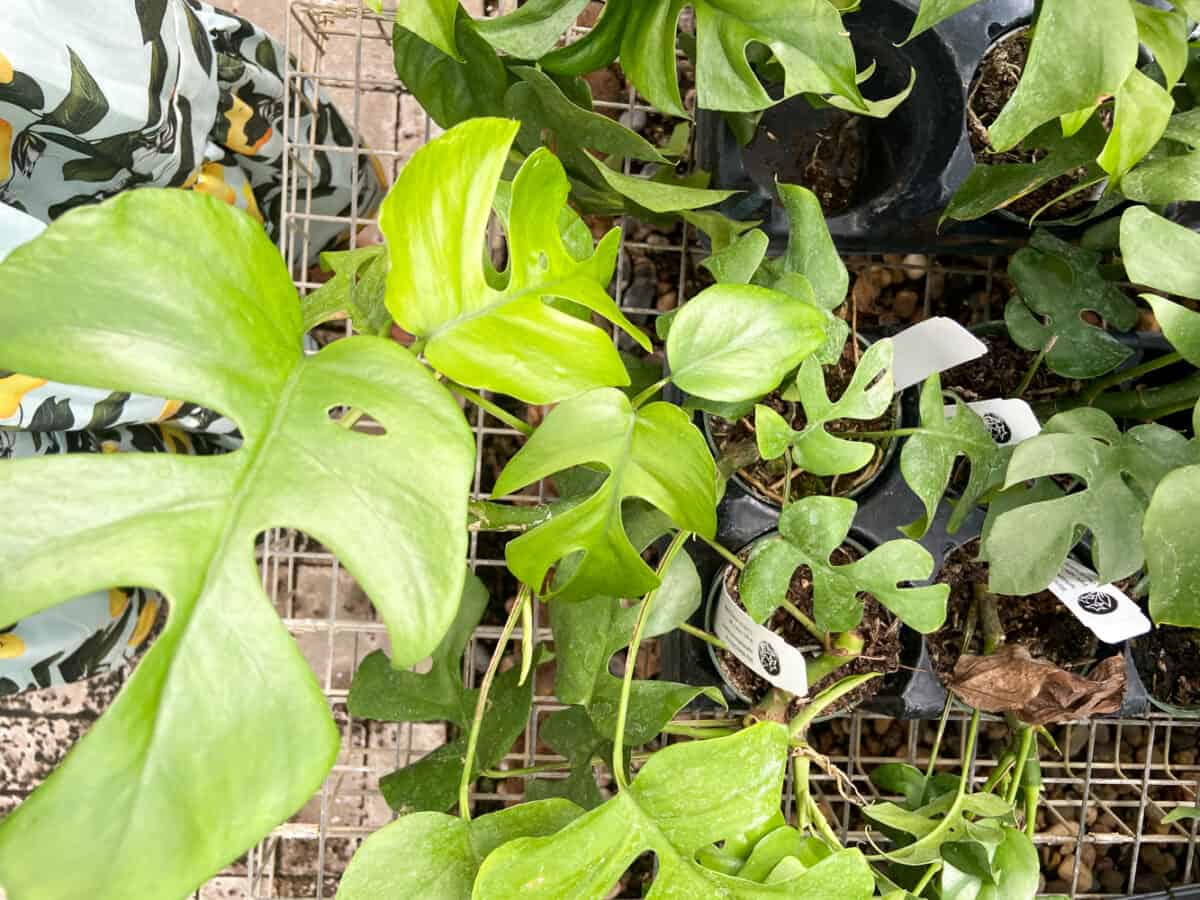
The Monstera Minima plants are very easy care plants that make beautiful indoor plants. Here’s some of the care tips you need to konw.
Water Requirements
Since these plants are native to tropical regions of Asia and Africa, they do best with regular moisture and watering. They have delicate roots that are sensitive to both over and under watering, so be sure to maintain a regular watering schedule.
Don’t let your plant sit in soggy soil. This can lead to root rot and can ultimately kill your plant. It is best to have consistently moist soil, but not too wet. Be sure to have a well draining pot to grow your plant in with a proper drainage hole in the bottom of the pot.
Light Requirements
The best location for your Monstera Minima is in a place with bright, indirect light. You should not place it in direct bright light as the leaves can burn easily. Remember that placement in front of a window with direct sunlight can intensify the heat (the glass can do this).
If your plant does not have it’s unique fenestrated leaves, this is a good indication that it needs more light. It will produce smaller leaves and less holes when grown in low light conditions.
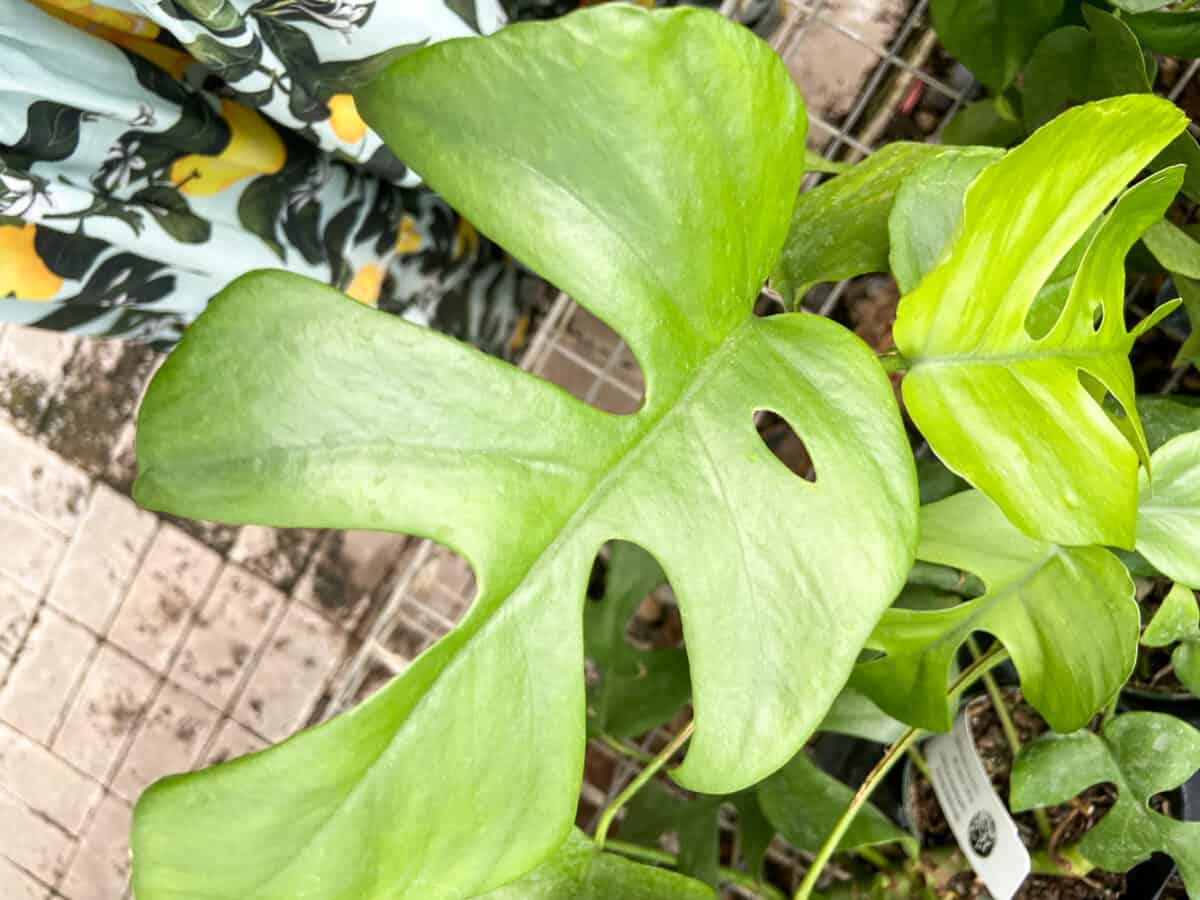
Soil Requirements
The soil you use should be one that retains a bit of moisture and is slightly acidic, but also is a well-draining soil. You can make your own by using regular indoor potting soil with some perlite and orchid bark added in or you can combine one part coco coir, one part orchid bark and one part perlite for best results.
Planting your plant in a pot with good drainage and proper drainage holes is also very important. You don’t want it sitting in soggy soil, as mentioned above. Having a regular watering schedule can help maintain the proper moisture in your soil.
Fertilizer Requirements
You will want to fertilize your Mini Monstera on a regular basis throughout the growing season. This is usually during the spring and summer months of the year. Use a diluted liquid fertilizer once a month and this should be sufficient to maintain strong and healthy growth for your plant.
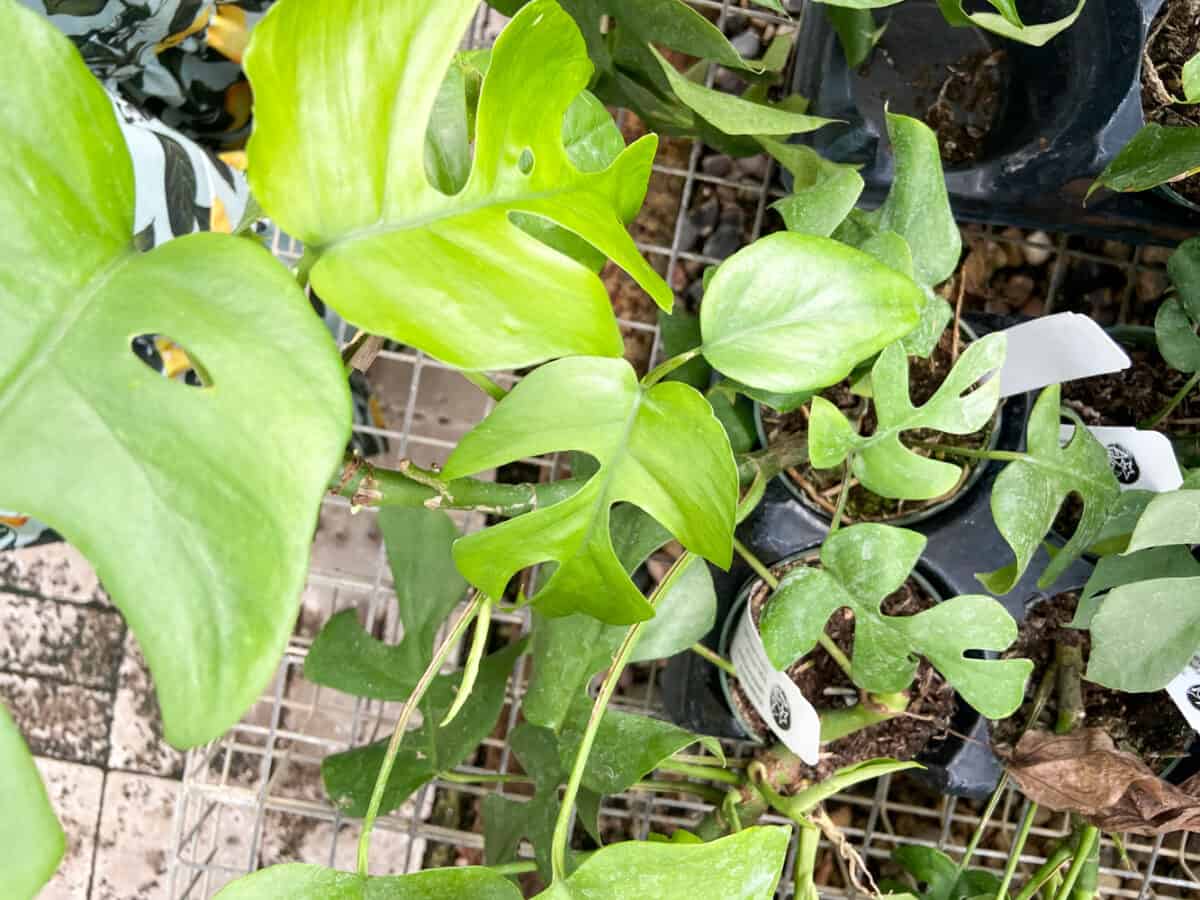
Temperature and Humidity Requirements
Because this is a tropical plant, you will need to maintain warm and humid conditions for it. The typical temperatures in a home are okay as long as the temperatures don’t dip below 68 degrees F.
These plants do, however, appreciate high humidity levels. To get added humidity when grown indoors, you can place your pot on a pebble tray or place it near a humidifier if the conditions in your home are too dry. Occasionally misting your plant may also help. Be sure to keep it away from heating or air conditioning vents, which can dry out your plant.
Pests and Diseases
As with most houseplants, your Monstera Minima may be susceptible to several common houseplant pests such as fungus gnats, scale or spider mites. The first thing to do if you see any signs of these little creatures is to isolate your plant from your other plants.
You can then treat your plants with an appropriate insecticide, which you can get at your local garden center or online. Follow the package directions for usage. Your plant can also suffer from diseases such as leaf spot or root rot. These tend to form when improper watering is done, either over or under watering.
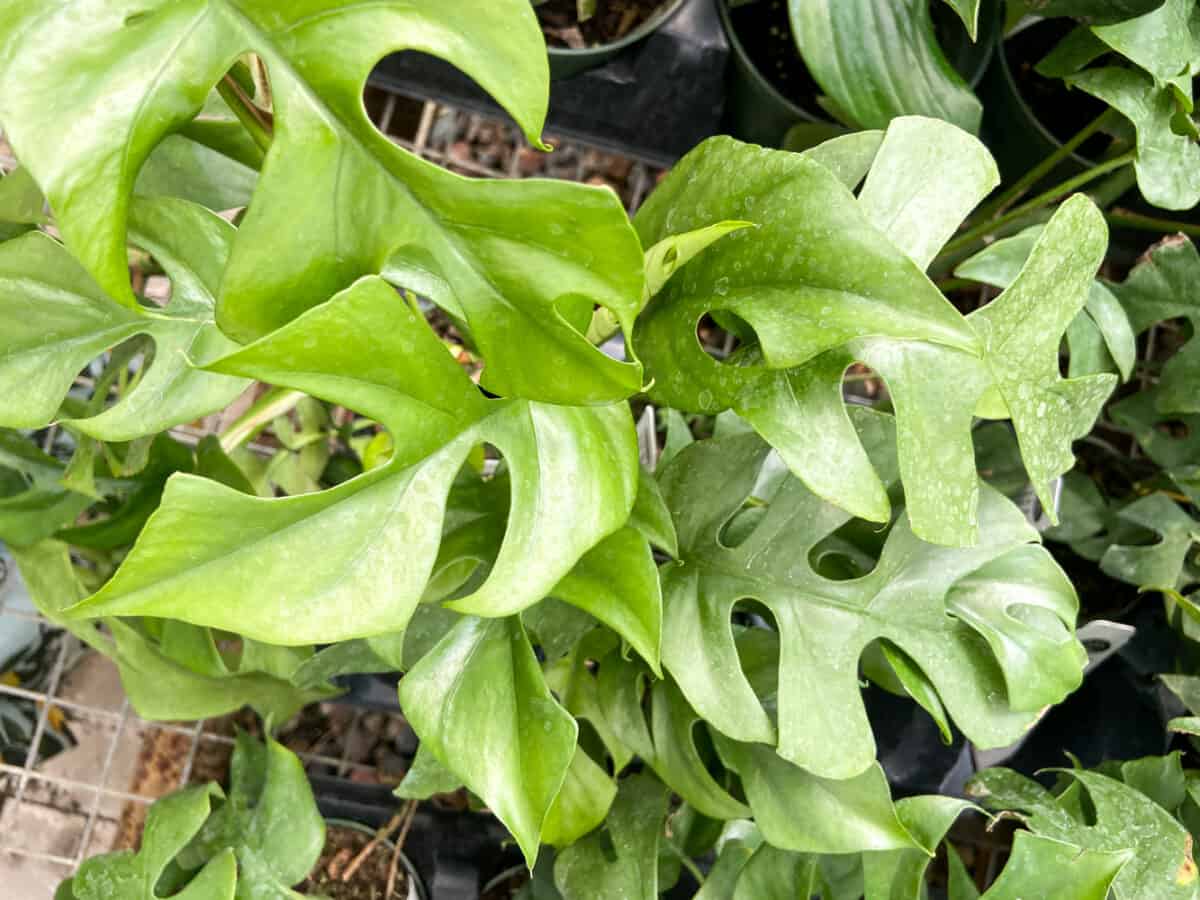
Pruning and Repotting
Pruning your Monstera Minima can do two different things. It can either encourage growth upwards or sideways, depending on which part of the plant you prune. If you want a taller plant, prune the top of the foliage. If you want a bushier plant, prune from the sides. Either way, it will encourage growth. You should also always prune any dead or dried out foliage to keep your plant healthy.
When it comes to repotting your plant, this will only be necessary if it appears to be outgrowing its current pot or the roots are growing through the bottom drainage holes. Use a new pot size that is at least one to two inches larger than the current pot and always use fresh soil.
Since this is a climbing plant, using a moss pole or some sort of support works well for it also. Remember this when repotting your plant to give it proper support to grow well. And also remember that the new soil will give it the necessary nutrients it needs for a while after repotting.
You can always propagate your plants to get new plants through stem cuttings. You can follow the same propagation tips as the monstera plant found here.
Common Problems
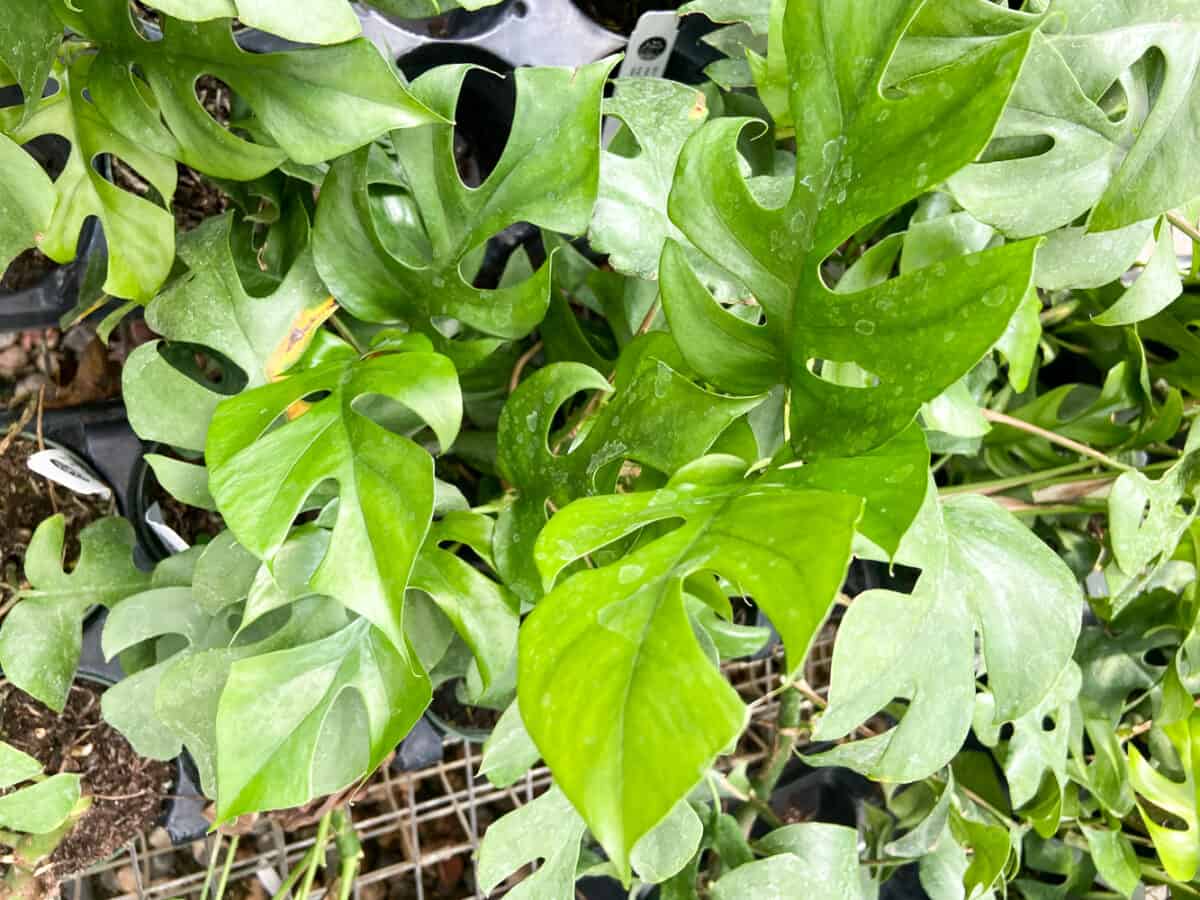
Brown, Crispy Edges
If you find that the leaves have brown, crispy edges, this is a good indication that there is a lack of both moisture and humidity. You will need to ensure that you are keeping the soil consistently moist with a regular watering schedule, but not soggy. You should also try to increase the humidity level around your plant.
Yellowing Leaves
There are several reasons for yellowing leaves on your Monstera Minima. The most common reasons are overwatering and a lack of proper light conditions. You can try to move your plant to a better location and also cut back on watering it to see if this improves the problem.
Wilting and Curling Leaves
These two problems can be a sign of both dryness and dehydration of your plant. You need to remember that this is a tropical plant and its normal habitat is warm, moist and humid. That is the reason you need to maintain a regular watering schedule and not let your plant dry out for any period of time.
FAQs
Yes, you can, but you should let it sit overnight to let the chemicals such as chlorine dissipate. Also, using cold water can shock the plant, so be sure the water you use is room temperature.
Yes, you can. You will need either a trellis or some type of support system to do this. You can use either wooden, bamboo or other types of materials to make your support system. As the plant grows, it may become too large for the support, so you may have to keep it trimmed to keep it growing upwards.
It is considered a fast-growing vining plant. That is why you will most likely need to train it to grow on a moss pole or trellis. It will also grow more quickly if you prune its leaves, either on the top or the sides of the plant. Pruning it on the top will help it grow taller. Pruning it on the sides will help the plant to bush out more.
In Conclusion
So, because of the variety of sizes and shapes of the plants in our world, you can choose just about any one and make it fit your home environment.
The Monstera Minima is just one example of a plant that you can pretty much tailor to your home size and space. As always, keep on growing!
